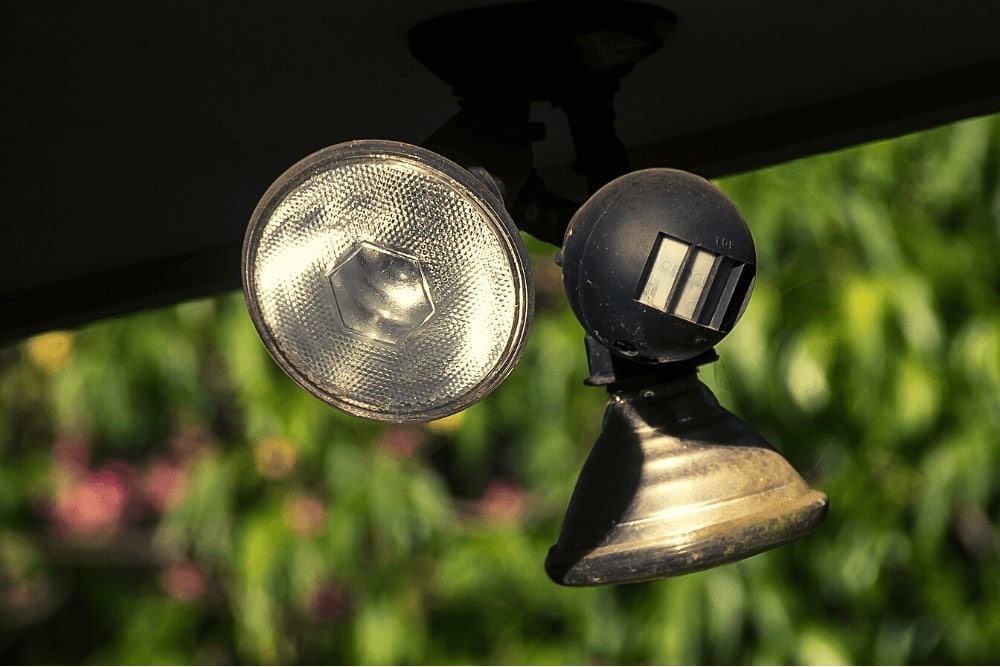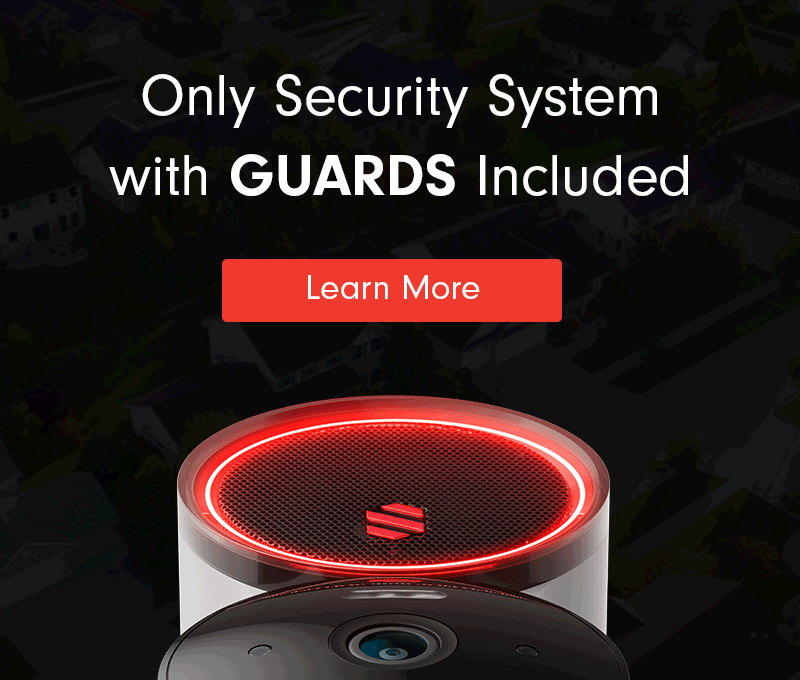DIY Security Light Installation

Nothing helps a burglar quite like the cover of darkness. Installing outdoor security lighting at your home is an easy way to deter troublesome behavior and send burglars scurrying. After all, a well-lit yard supports the best practices of Crime Prevention Through Environmental Design (CPTED). Plus, illumination keeps your family and visitors safe from tripping hazards and the like. There are a wide variety of features that you’ll find on even the simplest of security lights at your local hardware store. We’ll walk you through a few basic options and how to install a security light yourself. Even if you’re not a master electrician, security light installation is a relatively straightforward DIY project that can greatly improve your home’s security.
Security Lighting Features
Security lights aren’t all created equal. Depending on your budget, your home, and your needs, you’ll want to keep an eye out for different features and options. The floodlight you select will also determine some steps of the installation process. Here are some of the most popular options for outdoor security lights.
- Motion sensor: A security light with a motion sensor will turn on when it detects movement in the area. Installing a motion sensor light is great for driveways and walkways, where you might get lots of foot traffic. This kind of light is just as useful for welcoming guests as it is for scaring off loiterers or intruders. Because it dims or turns off in between triggering actions, a light with motion sensors can also conserve energy costs.
- “Dusk to Dawn”: These photosensitive security lights can detect sunlight and automatically turn off during the daytime. This helps you save energy and eliminates the harsh look of floodlights during the day, without ever flipping a switch.
- Timers: If your security light doesn’t have motion sensors or a photocell, there’s a good chance it’s controlled by a timer. This has the same benefits as a Dusk to Dawn light, but you may need to adjust the timer as the seasons change and nights get shorter or longer.
- Alternative power sources: Most floodlight options are hard-wired into your home’s electrical system. If you don’t know how to wire a security light, want a more renewable energy source, or can’t tap into your home’s electricity for whatever reason, consider another power source. You’ll find solar, plug-in, and battery-operated options at a minimum. Each has its own pros and cons (brightness, maintenance, etc.), so choose carefully. If you pick one of these options, ignore the instructions below and follow your user manual instead.
Looking to get started with a basic light option? Check out the AmeriTop Solar Motion Sensor Light or HMCity Solar Outdoor Lights. Both offer easy no-wiring installation, solar power, and motion sensors. However, if you want a more robust security light, a hard-wired installation may be in order.
How to Install Outdoor Security Lighting
So you’ve picked out your light, and now you’re ready to put it to use. First, a few quick tips. Your light should come with a manual that is particular to the model you’ve chosen; when in doubt, follow the manufacturer’s provided instructions. Make sure you have the needed permits before you start your security light installation. And if you’re not confident in your wiring skills, it’s best to contact an electrician that knows how to install security lighting in a way that’s safe, legal, and up-to-code.
Step 1: Choose a location for your floodlight
Choose a spot that will let your light shine on areas that need illumination the most. The corner of your garage or near your front door are good places to start. You’ll want to install the floodlight high, at least nine feet off the ground, for maximum coverage. Pick your perfect location and mark the spot with a marker/pen or tape.
Step 2: Shut off the power
Find an existing power source near your chosen location, which might be an outlet or switch on your inside wall. Check that this circuit can handle the additional load of your security light without exceeding 80% of the total load capacity. If this circuit can’t accommodate the increased load, you’ll have to choose another source or install a new circuit (which probably means a call to your electrician).
Once you’ve chosen a power source, turn off the power at your circuit breaker. Always double-check that the circuit is turned off with a voltage tester before you touch any wires. If you’re unsure, you can always turn off the power for your entire home.
Step 3: Create a hole
Using an electric drill and spade bit, cut a hole through your home’s exterior in the location you chose. The hole should be large enough for electrical cables.
Step 4: Attach and wire the light
This is when you’ll want to pay close attention to your manufacturer-provided instructions. Generally speaking, you’ll need to run wiring through the hole you created to the junction box with fish tape, attach a mounting bracket to your home’s exterior, assemble your floodlight, connect matching wires with wire connector nuts and electrical tape, and then affix your light to the mounting bracket.
Step 5: Make sure everything is weatherproof
For safety and longevity, you’ll want to ensure that no moisture can get into your fixture or junction box. Use caulk or putty to create a barrier and seal spots that might get exposed.
Step 6: Test your new fixture
Turn the power back on to the circuit and give your new light a try. If it uses a motion sensor, walk around and find the boundaries of the sensor’s detection zone, adjusting as necessary. You may also need to tweak the angle of the lights themselves for optimal illumination.
Congratulations! You just learned how to install a security light from scratch. Your home is that much more protected.
Maximize Your Home’s Security
The safest homes have layers of security to protect them. To enhance your home’s security, consider installing video surveillance cameras to watch for suspicious activity. Deep Sentinel’s wireless cameras are powered by artificial intelligence and monitored by human guards, giving homeowners extra peace of mind. The cameras feature night vision, so even if your new security light installation doesn’t go as planned, our virtual security guards will still be able to see and prevent crime before it happens.
Need a Solution that Prevents Crime?
Deep Sentinel is the only security technology that delivers the experience of a personal guard on every customer’s home and business. Visit deepsentinel.com or call 833-983-6006

